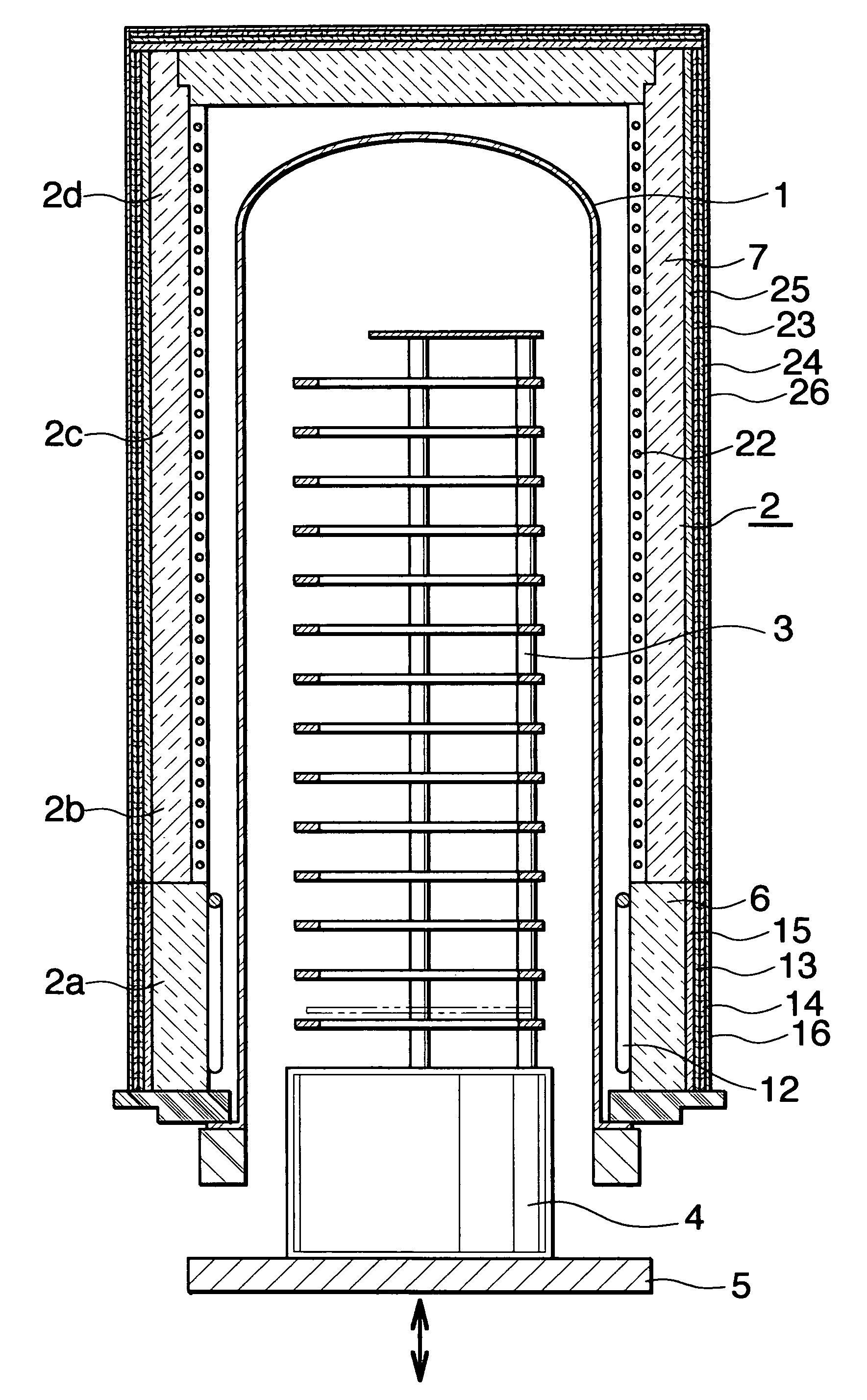Electric heater for a semiconductor processing apparatus
a technology for processing apparatuses and electric heaters, applied in lighting and heating apparatus, muffle furnaces, furnaces, etc., can solve the problems of increased loading, deformation and/or breaking of metal resistance heating elements, and limited temperature setting of heat treating equipment employing this type of heating elements, so as to reduce the cost, the effect of high loading and high loading
- Summary
- Abstract
- Description
- Claims
- Application Information
AI Technical Summary
Benefits of technology
Problems solved by technology
Method used
Image
Examples
Embodiment Construction
[0019]Best mode for carrying out the present invention is explained below, referring to the drawings.
[0020]FIG. 1 shows a vertical diffusion furnace which is an example of a semiconductor processing equipment, in which an electric heater by the present invention is employed; the vertical diffusion furnace comprises a process tube (1) to perform a heat treatment for semiconductor wafers, an electric heater (2) installed surrounding the process tube (1), a boat (3) which is mounted on a heat insulating cylinder (4) and can carry a number of semiconductor wafers, and a flange cap (5) which supports the heat insulating cylinder (4), performs a vertical movement (up / down), and closes a boat insertion opening at the bottom end of the process tube (1) at the time of the treatment.
[0021]The electric heater (2) is sectioned in four control zones consisting of the bottom zone (2a) as the end zone, the middle zones (2b)(2c) consisting of two zones, and the top zone (2d); the electric heater (2...
PUM
| Property | Measurement | Unit |
|---|---|---|
| diameter | aaaaa | aaaaa |
| diameter | aaaaa | aaaaa |
| temperature | aaaaa | aaaaa |
Abstract
Description
Claims
Application Information
 Login to View More
Login to View More - R&D
- Intellectual Property
- Life Sciences
- Materials
- Tech Scout
- Unparalleled Data Quality
- Higher Quality Content
- 60% Fewer Hallucinations
Browse by: Latest US Patents, China's latest patents, Technical Efficacy Thesaurus, Application Domain, Technology Topic, Popular Technical Reports.
© 2025 PatSnap. All rights reserved.Legal|Privacy policy|Modern Slavery Act Transparency Statement|Sitemap|About US| Contact US: help@patsnap.com



